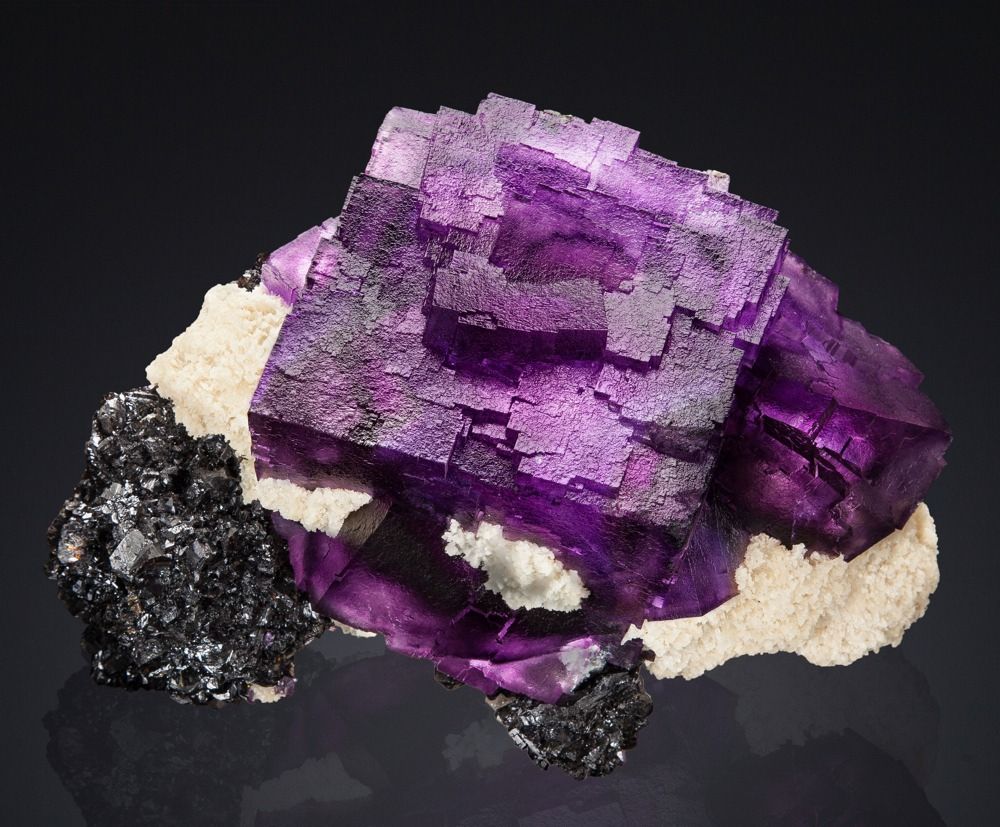Purple Cube Crystal Tops Auction Sales

A purple, cube-shaped crystal topped sales at a minerals-focused public auction, held Sunday (Oct. 20) in Dallas. The auction house, Heritage Auctions, had expected the specimen, which primarily featured a mineral known as fluorite, to be the top seller. But, at $125,000, the selling price fell short of the $200,000-plus expected by the auction house.
In total, the items for sale— which also included meteorites, fossils and an elephant-bird egg — brought in a little more than $2 million, short of the total gleaned from a similar auction in June, which brought in more than $3.57 million.
"Essentially, this is terra incognita," said Jim Walker, director of the nature and science department at Heritage Auctions, referring to what he described as an emerging market for minerals among collectors. "People are starting to understand [that] things that are seen in museums can be owned." [In Photos: See Fossils Up for Sale at Heritage Auctions]
While demand for other collectibles — such as fossils, fine art and cars — is well established, collecting minerals was, until recently, "a fairly insular hobby," Walker said.
Lower numbers this time around don't change this reality, he said, noting that June's auction featured more valuable pieces. Chief among them was one known as La Madona Rosa, which sold for $662,500. The formation of the smoky quartz crystals of this specimen evokes the form of the Virgin Mary, surrounded by rose-quartz crystals.
Both auctions have featured minerals from what is known as the Hoppel Collection, amassed by a collector Heritage describes only as a "wealthy industrialist" who kept the specimens in a private museum until approaching Heritage about selling them. The collection contains more than 2,000 specimens, which the auction house is in the process of selling. The name of the collection, Hoppel, comes from the bronze sculpture of a rabbit it contains, Walker said.
This auction also featured three fossil specimens in which a predator appeared to have choked to death on its prey — a phenomenon known as an aspiration. The most prominent of these specimens featured a nearly-300-million-year-old predatory amphibian halfway through dining on a smaller amphibian. Two smaller pieces involving fish sold, but the amphibian piece did not.
Sign up for the Live Science daily newsletter now
Get the world’s most fascinating discoveries delivered straight to your inbox.
With a starting bid of $93,750, this big-ticket fossil aspiration item would appeal to a smaller number of potential buyers, who might have been even less likely to splurge, given the uncertainty in financial markets provoked by the risk of a U.S. government default and the shutdown of the federal government that ended only days before the auction, Walker said.
Ultimately, Walker said he's confident that the amphibian-aspiration piece will sell at an upcoming auction.
Follow us @livescience, Facebook & Google+. Original article on LiveScience.












